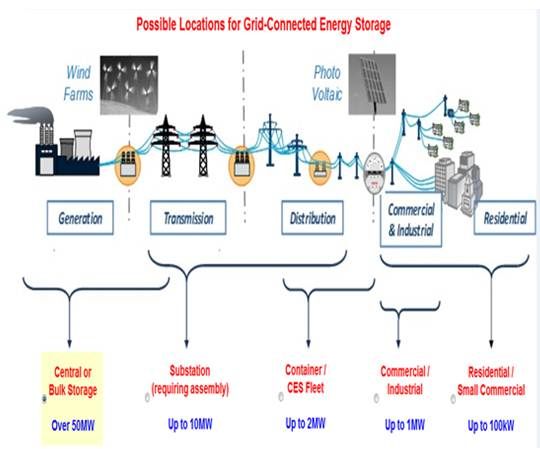It is a measure of the Obama administration’s commitment to advancing energy storage technology that reporters in the White House press corps have taken to moaning about having to visit yet another battery factory with the President.
A better measure of the administration’s commitment is that ARRA provided $185 million for 533 megawatts of energy storage demonstration projects, including three large battery systems for wind storage totaling 53 megawatts, two compressed air projects totaling 450 megawatts, a twenty-megawatt frequency regulation project, five distributed projects totaling nine megawatts and five technology development projects.
Pike Research predicted that energy storage will move from its 2011 installed capacity of 121 megawatts to 2,353 megawatts of installed capacity in 2021.
To further this effort, the U.S. Department of Energy (DOE) has partnered with the Energy Storage Systems program at its Sandia National Laboratory to create a series of tools to help stakeholders in the renewables community better understand how they can choose and use storage technologies.

“One is the Energy Storage Handbook,” explained DOE Energy Storage Research Program Manager Imre Gyuk. “It will have everything you ever wanted to know about storage in it.”
Another tool they are developing, Gyuk said, “is a handbook for PUCs, because sooner or later storage will come before public utility commissions and, having no experience with this technology, they will be baffled. Is this load? Is it generation? Or is it transmission? We are going to do a primer for regulators and public utility commissions.”
The third tool is ES-Select. “We have been involved in the development of energy storage technology,” Gyuk said. “And we have also done analysis of cost-effectiveness, [such as] how can you actually evaluate energy storage.”
ES-Select, which is free on the Sandia website, “allows people to do a first cut of whether storage would fit their particular application and also whether they can mix together applications,” Gyuk explained.

There is, he said, “a spectrum of applications and a portfolio of technologies. Not all technologies are good for all applications. Some of the applications can double up and therefore give you a bigger return on your investment.” For example, he said, “can you use it for frequency regulation and peak shaving at the same time? Because in order to make it cost-effective, you often will want to use several value chains simultaneously. This tool will tell you whether you can do that or not.”
The tool, Gyuk said, “goes on models. There is a lot of modeling information. And that modeling information is beginning to be validated by applications that we actually build.”
ES-Select also allows a user to derive a cost estimate for a selected storage technology, at a selected scale. “Not in a numbers way,” Gyuk explained. Instead, “it will give you a range of benefits for the storage application.”
Any kind of storage can be complementary to renewables, Gyuk said, but conditions for renewable and storage technologies vary by site and scale, so “giving people a number is not really a good way to do it. It is better to give them a range. If they are on the high side, it’s probably not cost-effective. If their particular niche is on the low side, then it will be.”
Gyuk has spent a decade studying energy storage systems and is “familiar with virtually the entire storage industry.” The thing these new tools demonstrate most clearly, he said, is that “energy storage is working its way toward maturity.”



